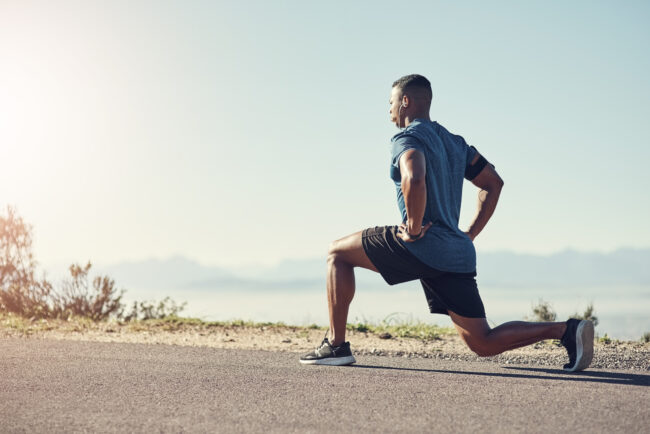
Ever wondered how athletes and fitness enthusiasts prepare themselves for peak performance? The secret lies in dynamic stretching.
This type of stretching is an example of a mobility exercise. It involves active movement and increases flexibility, enhances performance, and reduces injury risk.
In this comprehensive guide, we’ll explore how dynamic stretching differs from static stretching and how to incorporate dynamic stretching into your workout routine.
Dynamic Stretching vs Static Stretching
In fact, a good program will encompass both dynamic (actively moving a joint through the range of motion required for a sport) and static stretching (holding a stretch with no movement).
Generally, dynamic stretching is used as part of a warmup, while static stretching is beneficial post-workout.
Dynamic Stretching:
- An active form of stretching that requires your muscles and joints to move through their full range of motion and keep you moving.
- Ideal for improving flexibility and mobility and for warming up your muscles.
- Mimics the motions you’ll use during your workout or sport.
Static Stretching:
- Stretch held for a set amount of time.
- Targets the major muscles of running including the calves, hamstrings, and hip flexors.
- Generally performed while the body is at rest and focuses on elongating the muscles and enhancing flexibility.
For maximum benefit from static stretching, hold each stretch for a minimum of 30 seconds and not more than 2 minutes. Repeat for each side of the body, and complete at least one stretch per muscle group on a consistent basis.
Improving coordination and enhancing muscle activation, dynamic stretching is so effective that it’s often incorporated into a dynamic running warm up for athletes.
Dynamic Stretching Exercises
Time to wake up those muscles — here are some dynamic stretching exercises you can incorporate into your workout routine!
A good dynamic warm-up lasts approximately 10 minutes:
- Leg Lifts (Swing one leg out to the side and then back across your body in front of your other leg. Repeat 10 times on each side.)
- Butt Kicks (While standing tall, walk/jog forward with an exaggerated backswing so that your heels come up towards your glutes. Repeat 10 times on each side.)
- Pike Stretch (Get in a “pike” position (hips in the air). Put your right foot behind your left ankle. With your legs straight, press the heel of the left foot down. Release. Repeat 10 times on each side.)
- Hacky-Sack (Lift your left leg up, bending the knee so it points out. Try to tap the inside of your left foot with your right hand without bending forward. Repeat 10 times on each side.)
- Toy Soldier (Keeping your back and knees straight, walk forward, lifting your legs straight out in front and flexing your toes. Advance this by adding a skipping motion. Do 10 reps on each side.)
- Walking Lunges (Step forward using a long stride, keeping the front knee over or just behind your toes. Lower your body by dropping your back knee toward the ground. Maintain an upright posture and keep your abdominal muscles tight. Repeat 10 times on each side.)
When it comes to dynamic stretching, remember to start slow with small movements, focus on form, and pick up the speed/increase the range of motion as the exercises get easier.
At The Jackson Clinics, we understand the importance of incorporating dynamic stretching into your fitness routine. Our experienced physical therapists can guide you through a personalized dynamic stretching routine, ensuring you perform the right dynamic stretches to enhance your performance and prevent injuries.
Contact us today to schedule an appointment and improve your overall flexibility and athletic performance.









